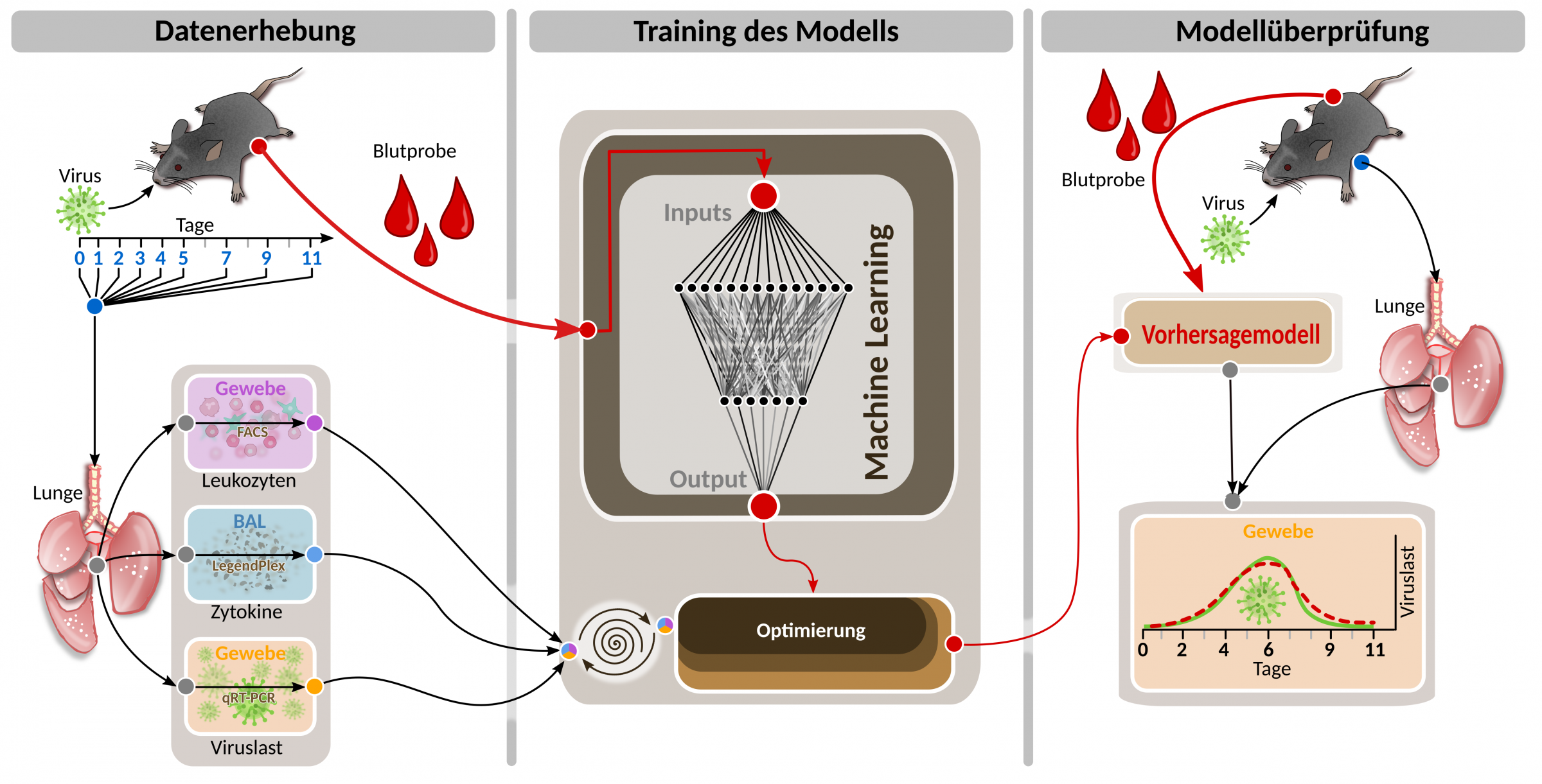November 29, 2022
Predicting the Course of Influenza Virus Infection
A few drops of blood could be enough to predict the course of influenza infection. This is suggested by a study conducted by the team of Esteban Hernandez-Vargas at FIAS, together with immunologists from the Helmholtz Centre for Infection Research (HZI) in Braunschweig and the University Hospital Magdeburg.
Every year, up to five million people worldwide fall ill with influenza, and many of them die. It is therefore important to keep an eye on the viral load in the lungs and the patients' immune reactions to the virus. Conventional methods determine, for example, viral antigens or inflammatory markers from swabs of the respiratory tract, but they are not very sensitive, at a high cost. The biggest hurdle is sampling in the lungs, which is risky for acutely infected patients.
A non-invasive method to predict the course of influenza would therefore be an improvement. One potential starting point is the altered composition of blood cells the course of influenza. Such blood parameters are easy and quick to obtain and already routine in diagnosis and patient care.
Hernandez-Vargas' group now used different machine learning models to evaluate diagnostic data from blood and lung samples obtained during influenza infection in mice. They used different machine learning algorithms, which can process multiple layers of information. This allows them to predict viral load and immune response in the lungs (cytokines and leukocytes) from blood values. Extensive data sets for training and subsequent practical testing of the models via infection experiments in mice were developed in Braunschweig at the Helmholtz Centre for Infection Research. "We were also able to show that certain white blood cells (neutrophil granulocytes) and blood platelets (thrombocytes) play a decisive role in predicting the course of infection in the lungs and are strongly involved in the immune response against influenza viruses," explains FIAS Research Fellow Esteban Hernandez-Vargas.
The proposed methodology paves the way for better clinical surveillance of influenza infections and possibly other respiratory infections based on blood data. "Hopefully, one day these predictions will be accurate enough to provide valuable guidance for further treatment of patients," says FIAS PhD student and one of the two lead authors of the study, Suneet Jhutty. In the future, every routine blood test may also provide an assessment of the condition in the lungs and thus give clues to the course of infectious diseases.
"Our study cannot yet be fully transferred to humans, because for example, unlike in the underlying animal experiment, humans can be infected with influenza more than once, which significantly influences the course of the infection and the immune response to the influenza virus," writes the team of authors consisting of systems biologists and theoretical scientists from FIAS and immunologists from Braunschweig and Magdeburg, funded by the German Research Foundation (DFG). Further studies should clarify how the genetic diversity of patients can be mimicked in the model. "To translate our approach to humans, our model still needs to be tested with existing data from controlled experimental infections in humans and clinical studies in patients," says Julia Boehme, the other lead author of the study. She conducted complex mouse experiments as the basis for the model calculations.
Recent studies by the team indicate that it may also be possible to diagnose COVID-19 from blood. "But we need more clinical evidence that our machine learning-based method can be generalised to improve medical care," Jhutty explains.
Publication: Suneet Singh Jhutty, Julia D. Boehme, Andreas Jeron, Julia Volckmar, Kristin Schultz, Jens Schreiber, Klaus Schughart, Kai Zhou, Jan Steinheimer, Horst Stöcker, Sabine Stegemann-Koniszewski, Dunja Bruder, Esteban A. Hernandez-Vargas, Predicting Influenza A Virus Infection In The Lung From Hematological Data With Machine Learning, mSystems, https://doi.org/10.1128/msystems.00459-22
